Angry shoppers are boycotting Tyson Foods products as the $53 million meat company closes plants in Iowa and elsewhere while hiring thousands of asylum seekers at job fairs in New York.
Campaigners are urging consumers to stop buying Tyson products amid its spate of poultry and meat processing plant closures in Iowa, Virginia, Arkansas, Indiana and Missouri.
They point to Tyson’s efforts to hire thousands of asylum seekers in New York, offering $16.50 an hour and free immigration lawyers, accusing the company of ditching American-born workers for cheaper migrant labor.
America First Legal, a conservative advocacy group launched by former Trump administration officials, warned Tyson that it could be breaking the law by favoring foreign-born workers over Americans.
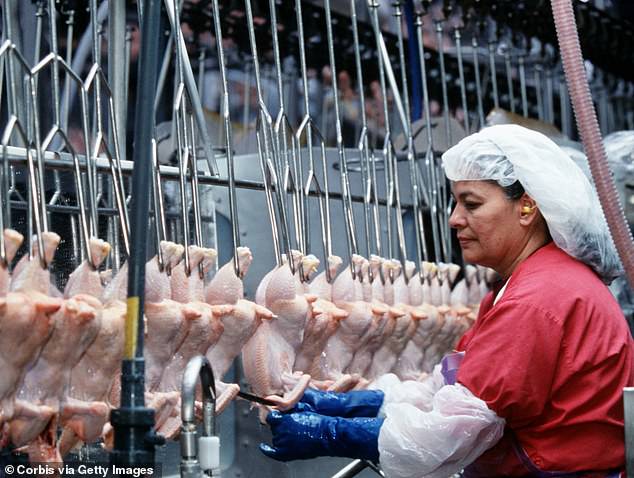
Tyson is looking to double its immigrant workforce to 84,000 this year, including roles at this plant in Springdale, Arkansas
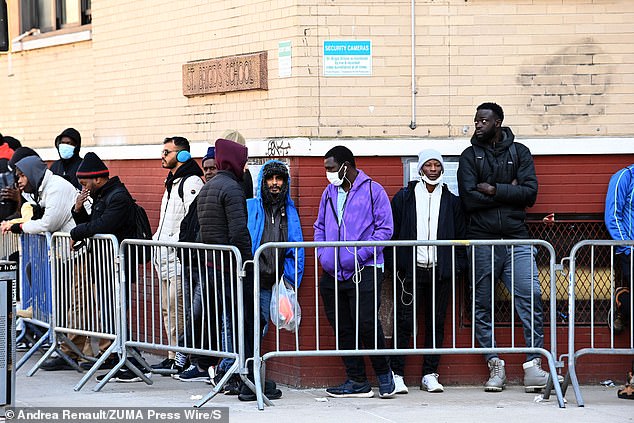

Tyson Foods says it wants to hire 42,000 immigrants this year, offers ‘job-and-lawyer’ packages to New York newcomers
“It is ILLEGAL under federal law to discriminate against US citizens based on their citizenship in favor of non-citizens of any kind when it comes to employment,” the legal action group wrote online.
Springdale, Arkansas-based Tyson Foods, which last year earned $52.881 million in sales through its Jimmy Dean, Hillshire Farm, Ball Park, Wright, Aidells and other brands, did not respond to DailyMail.com’s requests for comment.
The boycott raises tough questions for Tyson’s $13 million-a-year CEO, Donnie King, who has led the company since 2021, during which time it has funded the campaign coffers of President Joe Biden, Nikki Haley and others, according to Open Secrets.
The case highlights fears of migration across the US-Mexico border and that asylum seekers are replacing Americans, particularly in meatpacking and other undesirable jobs amid record low unemployment.
Tyson said this week it would close its pork plant in Perry, Iowa, this summer, putting 1,276 people out of work in a town of just 8,000.
About half of the factory’s workers are understood to be Latino, according to local news media.
Last May, Tyson Foods closed two facilities in Virginia and Arkansas that employed more than 1,600 people. In April, it announced plans to cut 10 percent of corporate jobs and 15 percent of executives.
Plants in North Little Rock, Arkansas; Corydon, Indiana; and Dexter and Noel, Missouri are set to cease operations in the first half of 2024 after a 0.8 percent decline in company sales between 2022-2023.
Tyson, meanwhile, has moved to hire more of the asylum seekers who traveled to New York and other cities after entering the United States to seek to fill unwanted jobs amid a low unemployment rate of 3.9 percent.


Tyson’s $13 million-a-year CEO Donnie King has been leading the company since 2021


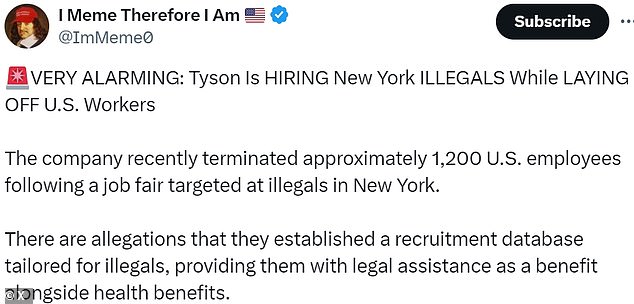

Conservatives on social media called for a boycott of Tyson and its various food brands


Tyson is America’s largest meat and poultry company by sales, which fell 0.8 percent to $52,881 million last year
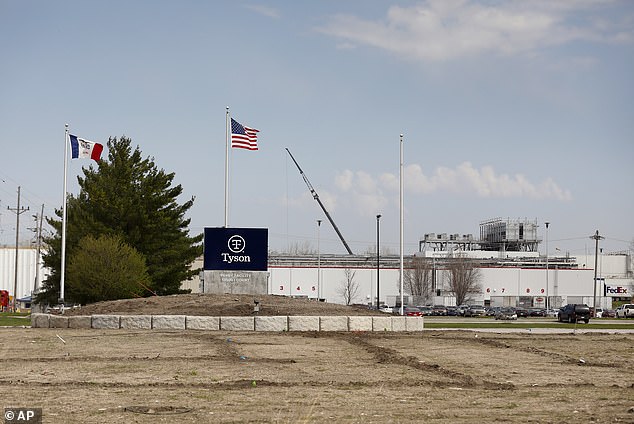

Tyson’s pork plant in Perry, Iowa, is the latest to be mothballed, with 1,300 jobs lost
The meatpacker already employs about 42,000 immigrants among its 120,000-strong American workforce and is looking to strengthen this by, among other things, collaborating with the Tent Partnership for Refugees, a nonprofit organization.
“We’d like to hire another 42,000 if we could find them,” Garrett Dolan, who heads Tyson’s social efforts, told Bloomberg recently.
In recent weeks, the company has hired dozens of asylum seekers from Venezuela, Mexico and Colombia at a job fair in New York City. They left to work at its poultry plant in Humboldt, Tennessee.
According to Dolan, asylum seekers fill the gaps in factories with a high staff turnover – the company needs to fill 52,000 jobs this year.
Directors offer wages starting at $16.50 an hour with paid immigration attorneys and other benefits.
A large portion of the new hires “are going to come from refugees and immigrants, so we’re now in the process of thinking strategically through that,” Dolan said.
Asylum seekers cannot work when they enter the United States and typically do not receive permits until 180 days after they apply for legal status.
Many wait years before their first immigration court hearing to assess their asylum application where they can work.


Workers, including many Latinos, have protested Tyson’s plant closings, like this one in Van Buren, Arkansas, in April 2023
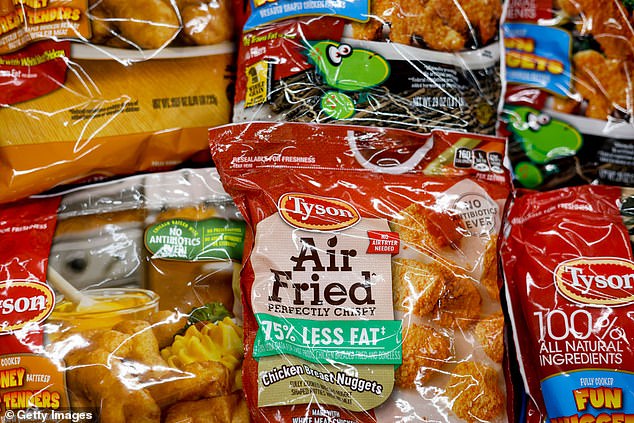

Tyson Foods brands include Tyson, Jimmy Dean, Hillshire Farm, Ball Park, Wright and Aidells
In an effort to help its migrant workers, Tyson has spent millions of dollars on immigration lawyers and is offering paid time off to attend court hearings.
Many also benefit from temporary housing, on-site childcare, transportation and English tuition.
Tyson agreed in 2022 to hire 2,500 refugees under the Tent program.
The firm added 150 hires last year, including 50 Afghan refugees to work in Arkansas, including in Fayetteville, Springdale and Bentonville.
The boycott underscores the fear that Americans are losing jobs to economic migrants from abroad, who are pushing down labor wages.
Data from the US Bureau of Labor Statistics shows that between July and August 2023, there was a staggering drop of 1.2 million natives in the labor force.
In stark contrast, about 688,000 jobs were secured by foreign-born workers, underscoring the difference in President Joe Biden’s pro-immigration policies versus Donald Trump’s hard-line border stance.
